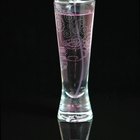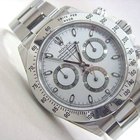
The world of glassware is full of odd names. There's the champagne flute, the snifter, the stein and even the hurricane glass. One of the simplest glasses, though, has one of the oddest names. The name "tumbler," attached to a relatively short, wide glass without a handle or stem, dates to the 17th century and has its roots in feasting customs from the Middle Ages.
Early Tumblers Actually Tumbled
The name "tumbler" is traced to the mid-17th century. Originally, the term referred to a type of cup, usually metal, with a round bottom. When placed on a table, these cups would roll -- or tumble -- spilling the drink of anyone who put the cup down with a drink on it. This tumbling may have been slight, given that surviving examples of the tumbler seem to sit relatively steadily on their rounded bases.
Or Did They?
The idea that tumblers would spill if set down is not the only possible explanation. Some sources believe the opposite -- they claim that tumblers were weighted at the bottom so that they would automatically right themselves if knocked over. This view dates to at least the late 19th century and is advocated by some antiques experts today. As a third option, an 18th-century etymologist suggested that the word "chalice" for a drinking glass originated from a Greek word meaning "to roll around."
But Do They Hold Water?
The idea that tumblers are so named because they "tumble" over has some support from the fact that there were other types of medieval drinking vessels, such as the drinking horn, that would roll when placed on the table. No matter which explanation is correct, the question remains as to why modern short glasses, which don't tumble, are still called tumblers.
The Modern Tumbler
One possible explanation for the survival of the name is that it relates not to the shape but to the size of a glass. Today's tumbler is about the same size as those of the 17th century. The term "tumbler" appears in some old recipes much in the same way "cup" does -- suggesting that the connection may simply be the size of the vessels.
Related Articles

How to Measure a Finger of Scotch

Alcohol Content: Proof vs. Percentage ...

How to Tell If a Ladies Rolex Is Real

What Games Did Children Play in ...

How to Identify Your Tissot

Can You Pour Boiling Water Into a ...

What Do the Numbers Mean on Perfume ...

How to Identify Gruen Watches

How to Find the Serial Number on a ...

Why Does the Wedding Ring Go on the 4th ...

How Long Does Liquor Keep in Storage?

How Much Is a Single Serving Size of a ...

What Can You Mix With Blended Scotch?

The Meaning of Exchanging Wedding Rings

How to Put the Back Cover on a Watch ...

How to Clean a Mineral-Glass Watch Face

How to Spot a Fake Rolex Watch

How to Tighten Plastic Sunglasses Frames

Krups 880 Instructions

How to Change the Battery on a Casio ...
References
Writer Bio
Dr James Holloway has been writing about games, geek culture and whisky since 1995. A former editor of "Archaeological Review from Cambridge," he has also written for Fortean Times, Fantasy Flight Games and The Unspeakable Oath. A graduate of Cambridge University, Holloway runs the blog Gonzo History Gaming.
Photo Credits
Michael Blann/Digital Vision/Getty Images